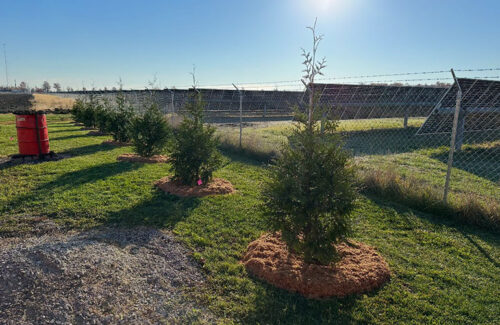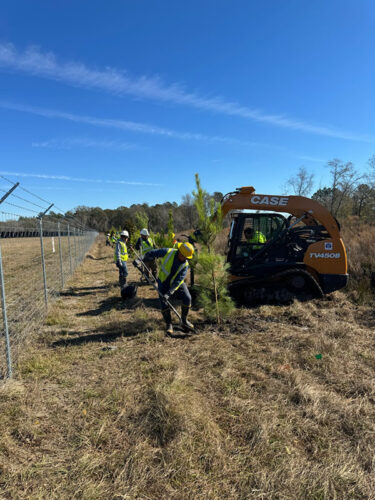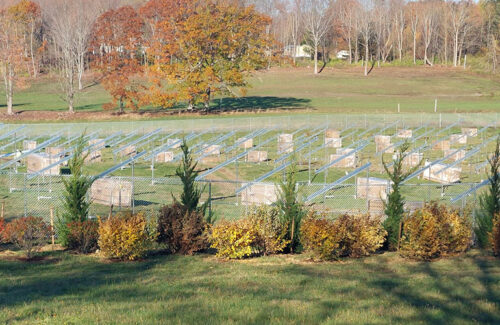
Effective landscape screening can enhance the aesthetics of solar energy sites
Although the main purpose of barriers is usually to block out unfavorable landscapes, using local evergreen tree species is an effective and sustainable solution. Unfortunately, many municipal authorities have overlooked local tree species when designating evergreen barriers, thus missing opportunities to enhance ecological benefits. Local evergreen trees and shrubs not only maintain their leaves throughout the year, but also promote local biodiversity by providing necessary habitats for wildlife.

An effective landscape buffer zone should include a variety of trees, shrubs, flowering plants, and grasses. This diversity not only enhances visual appeal, but also brings additional ecological benefits, such as seasonal flowering and providing habitats for pollinating insects such as butterflies, bees, and hummingbirds. Although designing diverse landscapes requires careful planning and effort, the long-term advantages outweigh the initial investment and can create a beautiful, environmentally friendly, and sustainable environment.
It is crucial to consider the planting conditions at specific locations in order to ensure successful landscape selection. Time management is particularly important because planting in summer can put pressure on the roots, leading to poor or failed plant growth. The optimal planting periods are spring and autumn, which are consistent with the natural growth cycle. Although the construction schedule may bring limitations, delaying planting is better than risking plant failure, as plant failure can damage the effectiveness of the buffer zone.
The selection of plant material size is another key factor. Although smaller plants are easy to obtain, they may be difficult to compete with surrounding vegetation or inadvertently damaged during maintenance activities. Larger plant materials need to be procured as early as possible, but can provide immediate visual effects and help quickly establish plant barriers. In some cases, projects may require materials for contract planting, emphasizing the importance of early planning in the landscape selection process.

Hiring experienced professionals is also crucial for ensuring project success. Many landscape installation failures are caused by inexperienced EPC or civil contractors installing without the necessary professional knowledge. Hiring skilled landscape professionals who provide assurance for their work can significantly improve project outcomes, ensuring the durability and effectiveness of landscape screening.
Through thoughtful landscape design, strategic procurement, carefully selected local plant varieties, professional installation, and comprehensive warranty support, solar projects can successfully achieve dual benefits - enhancing ecological health while enhancing the visual appeal of the site. These practices not only promote biodiversity, soil stability, and long-term sustainability, but also help to integrate more harmoniously with surrounding communities, creating a landscape that is both environmentally friendly and aesthetically pleasing.

© Copyright: 2025 Xiamen Wintop New Energy Tech Co., Ltd.. All Rights Reserved.

IPv6 network supported